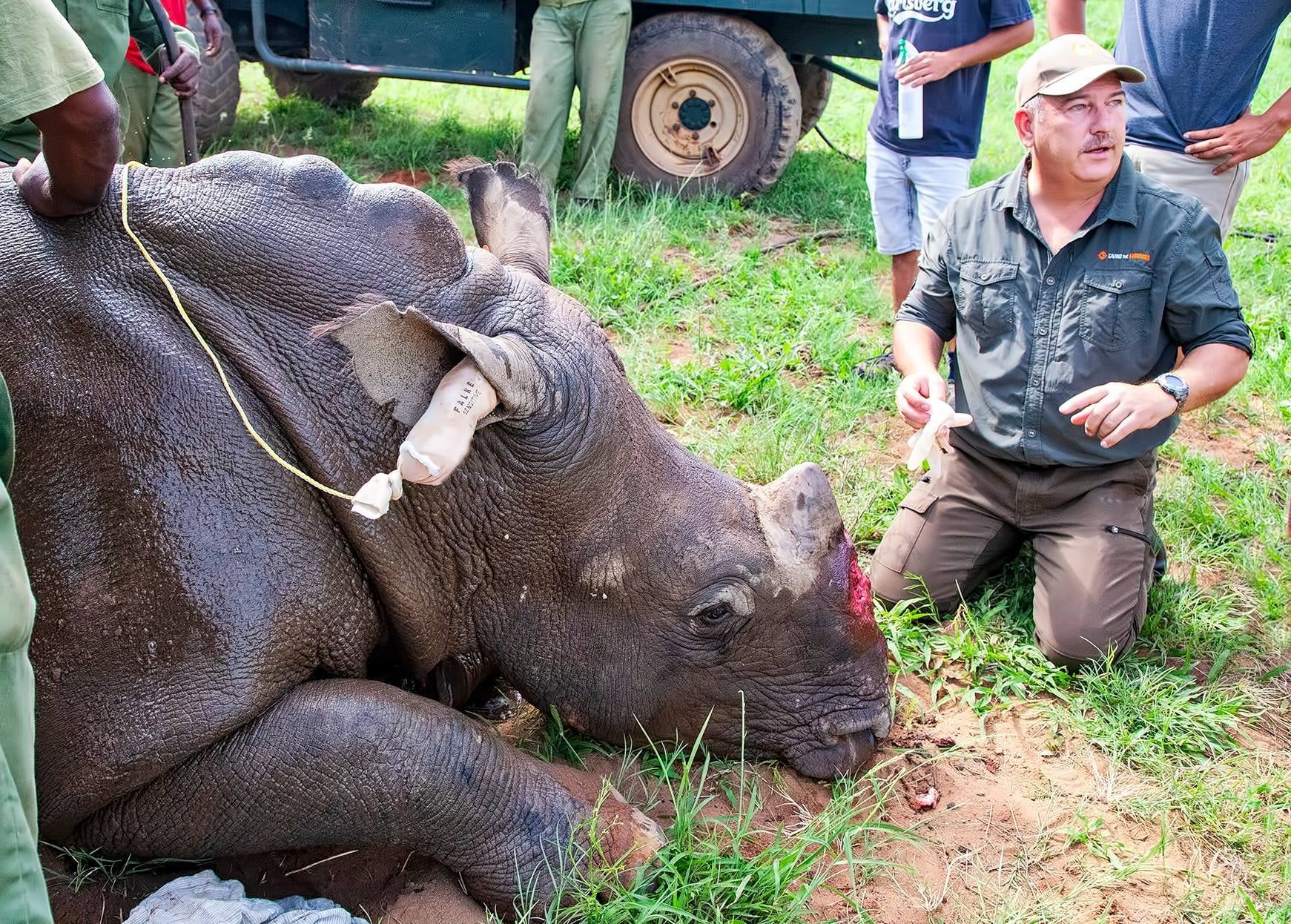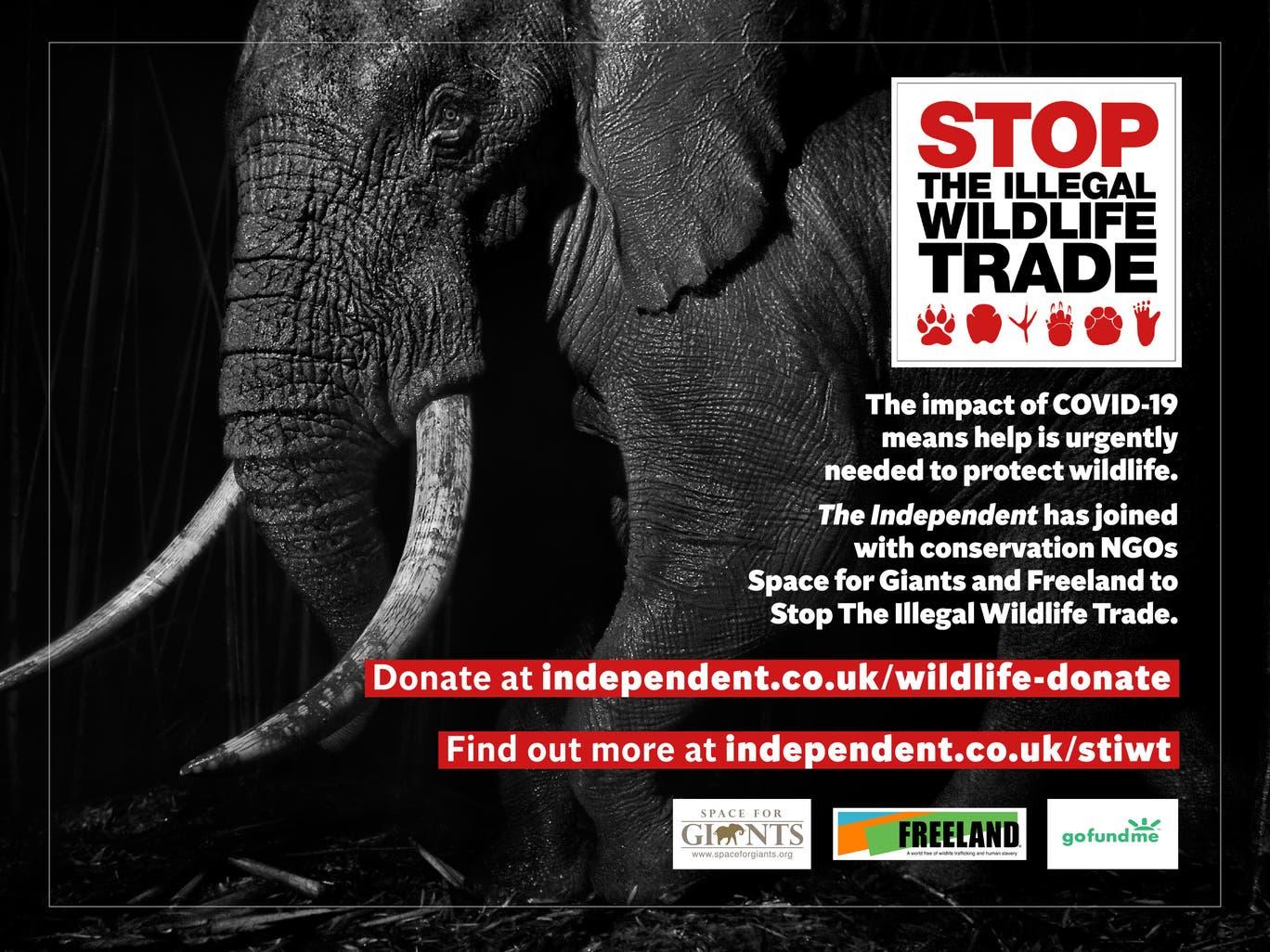Life as a vet helping reconstruct the faces of poached rhinos
Dr Johan Marais is one of the few ‘wild vets’ that can help give rhinos brand new faces. He speaks to Abbianca Makoni about his efforts to combat the illegal wildlife trade


Your support helps us to tell the story
From reproductive rights to climate change to Big Tech, The Independent is on the ground when the story is developing. Whether it's investigating the financials of Elon Musk's pro-Trump PAC or producing our latest documentary, 'The A Word', which shines a light on the American women fighting for reproductive rights, we know how important it is to parse out the facts from the messaging.
At such a critical moment in US history, we need reporters on the ground. Your donation allows us to keep sending journalists to speak to both sides of the story.
The Independent is trusted by Americans across the entire political spectrum. And unlike many other quality news outlets, we choose not to lock Americans out of our reporting and analysis with paywalls. We believe quality journalism should be available to everyone, paid for by those who can afford it.
Your support makes all the difference.Dr Johan Marais spends his days reconstructing the faces of several rhinos that have been left barely alive in fields across South Africa due to savage attacks from poachers.
Quite often the doctor finds himself dealing with wildlife that has been shot, cut open or wounded with unknown instruments by those looking to smuggle its horns.
The horn of a rhino is made of keratin, the same substance as fingernails, which means they can grow back. They are considered to be worth more by weight than cocaine, so traffickers go to great lengths to smuggle it out of, or around, Africa.
Dr Marais’ work and that of his team at Saving the Survivors, a dedicated charity focused on treating and reconstructing rhinos, is considered “important” among local residents in Johannesburg.
He is one of a few ‘wild vets’ that can help reconstruct and make brand new the faces of rhinos.
South Africa is home to 80 per cent of Africa’s rhino population, but now there are only about 25,000 rhinos left and roughly 1,000 are killed every year for their horn.
That is why he has now joined our Stop the Illegal Wildlife Trade campaign in demanding that syndicates stop poaching, smuggling and consuming wildlife.
Our campaign seeks an international effort to clamp down on poaching and the illegal trade of wild animals, which remains one of the greatest threats to biodiversity in the future.
Last year 394 rhinos were poached in the SA, 30 per cent fewer than the year before and the lowest yearly tally since 2011.
STOP THE ILLEGAL WILDLIFE TRADE
We are working with conservation charities Space for Giants and Freeland to protect wildlife at risk from poachers due to the conservation funding crisis caused by Covid-19. Help is desperately needed to support wildlife rangers, local communities and law enforcement personnel to prevent wildlife crime. Donate to help Stop the Illegal Wildlife Trade HERE.
The majority of these incidents came from Kruger National Park (245) and the Kwa-Zulu Natal (93), according to South Africa’s Department of Environment, Forestry and Fisheries.
Some have praised the lockdowns imposed by the government and believe these have contributed to the low poaching figures.
While others say that because so many rhinos have been killed there are hardly any more left for poachers to kill.
But what’s it like working in one of the deadliest trades, in a country where the animals you’ve been asked to care for are dying at a rapid rate?

The Independent spoke with Dr Marais’about his day to day job and how he’s contributing to the fight against the illegal wildlife trade.
This interview was conducted just a month after.
Dr Marais’ team rushed to the aid of a rhino that had been shot in the left limb following a poaching attempt on a private reserve in the Limpopo region.
His team of rangers managed to locate the injured wildlife and direct the helicopter through the thick bushes so that Dr Marias’ could dart and immobilise the wounded animal before treating it.
How would you describe your day to day job?
“In the beginning when poaching first started, there was a massive issue with rhinos being shot and having their faces hacked off. We first saw this issue when we started ‘Saving the Survivors’ back in 2012. We decided to just focus on Rhino’s because there were a lot of injuries.
“We would either get a call during the day or the previous night and then depending on where it is -it would take either a two or three hour to get to this injured rhino.
“If it’s further than that, then we would often fly to the area, If we get there, we would obviously immobilise the animal and then we would either treat the gunshot wound, or if it’s a fracture, we’d deal with that.
“We actually treated a lot of fractures because the poachers aim was luckily not so good.”
What are your typical working hours?
“Because in South Africa you often have to immobilise these animal when it’s hot - you sometimes actually have to get up at four o’clock in the morning to avoid the heat.
“In winter time, which is what we’re in now, it’s much better because it actually doesn’t get that hot now and you can work better.
“You can easily stay at work until five o’clock in the evening and head off but summer time is a problem because you often wake up at four and leave around seven.”
How do you know where rhinos have been poached - do you wait for people to contact you?
“So we are either contacted by the owner of the rhino, the police, by the local veterinary or passersby.”
Did the pandemic and the lockdowns that soon followed effect your work in any capacity?
“That was quite interesting, so during our lockdown four and five we were still able to travel because we got special permits to travel and because people couldn’t move around - the poaching actually decreased substantially last year for about three, four months.
“But the moment that restrictions eased it just increased so severe lockdowns seemed to work in favour of our animals because people can’t move around.”
What are some of the challenges you experience in your job?
“When we tried to treat some of these facial wounds in the beginning it was a massive challenge, because we didn’t know how to close these injuries. Another challenge is that the skin of a rhino’s face is exceedingly thick. So much so that there was no commercial medical person that was available and could actually penetrate the skin of a rhino properly.
“Whether you go to medical or human science it just didn’t exist. So it was a matter of thinking ‘If we do put an antibiotic or whatever onto these mess of wounds - how do you cover it or do you keep it in place on on the face of the rhino.’
“So we had to work with engineers to actually get a specific instrument that would penetrate the skin of a rhino.”
How has the growth of your team over the last few years helped save more rhinos?
“We did manage to expand the team. In the beginning it was quite a challenge because it was only me but at least we now have four veterinaries so makes it easier.
“We are really scattered throughout the country so it’s much easier for people to get access to us and our work.”
Join our commenting forum
Join thought-provoking conversations, follow other Independent readers and see their replies
Comments